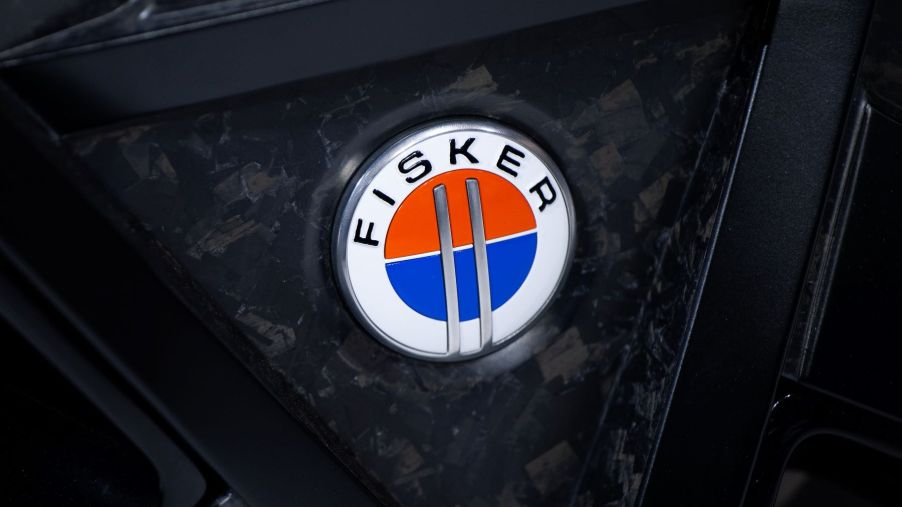
The 2023 Fisker Alaska Is a Tesla Cybertruck That Doesn’t Look Terrible
Plenty of electric pickups will make their debut soon, including ones from relatively unknown automakers. Fisker doesn’t have any beloved nameplates like the Ford F-150 or the GMC Hummer, both of which are slated to have EV versions. Still, its upcoming Alaska pickup looks promising.
Judging from its teaser image, the Fisker Alaska doesn’t quite resemble a traditional truck. It looks more like a pickup you’d see in a sci-fi movie, which is probably what the Tesla Cybertruck was trying to emulate. The only difference? The Fisker Alaska isn’t ugly (subjectively, of course).
The history of Fisker Automotive and Inc.

As we learned from AutoWise, the Fisker Alaska pickup truck isn’t the EV automaker’s first foray into the automotive world. Fisker Automotive was founded in 2007 by Henrik Fisker, who used to be a designer for Aston Martin. He began building aftermarket parts for luxury vehicles until he started developing the Fisker Karma.
The futuristic plug-in Karma sports car was eventually released, but it only faced problems afterward. The car was only produced because of a loan issued by the Department of Energy, which was later retracted. The Karma’s reputation was also muddied due to testing problems with Consumer Reports.
Later, 2013 shook the company to its core, as Henrik Fisker was removed from his position, and many employees were laid off. Fisker almost filed for bankruptcy, but it was eventually bought by the Wanxiang Group and transformed into Karma Automotive.
Eventually, in 2016, Henrik Fisker launched a successor company named Fisker Inc. With the upcoming release of the Fisker Ocean, it seems that Fisker is finally ready to start producing new electric vehicles.
What we know about the Fisker Alaska
Henrik Fisker dropped the first Alaska teaser out of nowhere, Car and Driver reports. He tweeted a picture of the truck’s tail end in Feb. 2020, with no context other than “Electric pick up!”
As the tweet began getting traction and comments, Fisker quickly removed the photo. A Fisker spokesperson later confirmed that the tweet was made by mistake but that Fisker was indeed building an electric pickup.
Fisker gave us more details about the truck last year, including a teaser of the vehicle’s profile. Fisker also said this was just a prototype, teasing that the consumer version would be “way more radical.”
The Fisker Alaska promises to be the most efficient electric pickup because it will have the lowest curb weight of them all. It also appears that the Fisker Alaska won’t be geared toward utility: Fisker describes it as more of a “lifestyle” truck. No powertrain specs, range estimates, or project towing capacities have been revealed yet.
Like the Tesla Cybertruck, the Fisker Alaska has a lot of sharp angles. However, drivers will probably be more enticed by its traditional body shape, which looks somewhat like the Hyundai Santa Cruz, as seen on CarBuzz. In contrast, drivers might feel claustrophobic looking at the Cybertruck’s relatively small windows and narrow structure.
When will the Fisker Alaska be released?
According to Green Car Reports, the next Fisker vehicle (probably the Alaska) will be available in late 2023. Fisker also said that the company was working on a few other designs alongside the new pickup, including the Pear EV under $30,000. Pricing for the Alaska pickup truck is unknown, but it could be around $40,000 or more (using the Fisker Ocean as a reference point).
As for the Tesla Cybertruck, Elon Musk has recently stated that production won’t start until early 2023. The Cybertruck’s release has been pushed back several times, primarily due to the semiconductor chip shortage. If deliveries can begin by the end of that year, the Fisker Alaska will have some direct competition.
Even diehard Tesla fans can admit that the Cybertruck’s design is rather polarizing. In contrast, the Fisker Alaska looks familiar enough to pull off futuristic flair with confidence. Only time will tell if its final prototype turns out to be as radical as the Cybertruck.


